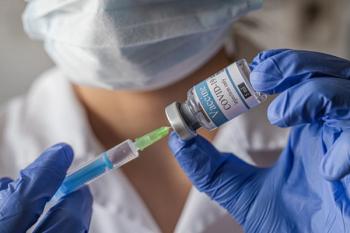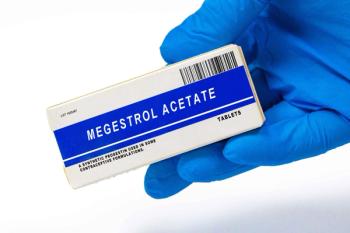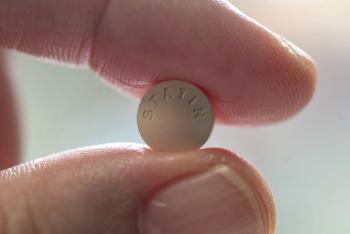
FDA Issues Complete Response Letter to Manufacturer of OLC, Treatment for CKD-Related Hyperphosphatemia
Key Takeaways
- The FDA's complete response letter for OLC cited deficiencies unrelated to the drug, delaying its approval for hyperphosphatemia in CKD patients on dialysis.
- OLC, a lanthanum-based phosphate binder, showed efficacy and tolerability in a phase 2 trial, with most patients achieving target serum phosphate levels.
The letter cited deficiencies previously identified at a third-party manufacturing vendor unrelated to oxylanthanum carbonate (OLC).
The FDA issued a complete response letter (CRL) for the new drug application (NDA) for oxylanthanum carbonate (OLC; Unicycive Therapeutics) to treat hyperphosphatemia in patients with chronic kidney disease (CKD) who are on dialysis. The CRL was received after OLC’s initial Prescription Drug User Fee Act date of June 28, 2025, and cited for deficiencies that are unrelated to OLC itself. The manufacturer reported that, as part of the NDA review, they have not highlighted any technical concerns related to the submitted documentation or testing of OLC.1,2
OLC is a next-generation lanthanum-based phosphate-binding agent that uses nanoparticle technology to treat hyperphosphatemia in patients with CKD who are undergoing dialysis. Hyperphosphatemia affects over 80% of patients on dialysis and has been associated with an increased morbidity and mortality, according to the manufacturer. Current phosphate-lowering treatments for this population do not have potency, low pill burden, and palatability, all of which are critical for successful treatment.1-3
“We plan to immediately seek a Type A meeting with the Agency to gain alignment on the best strategy to ensure rapid resolution of the CRL,” Shalabh Gupta, MD, CEO of Unicycive Therapeutics, said in the news release.1
In a phase 2 clinical trial, OLC was shown to enable adequate control of serum phosphate in the majority of patients with CKD who entered maintenance. These findings, which were published in Journal of the American Society of Nephrology, also showed that the treatment was safe and generally well-tolerated among patients, with adverse drug reactions (ADRs) observed considered common in this population and with other phosphate binders.2,4
The open-label, single-arm, multicenter, multidose study enrolled 86 patients with CKD and hyperphosphatemia receiving maintenance hemodialysis. The trial’s primary objective was to evaluate the tolerability of OLC at its clinically effective doses (goal: serum phosphate ≤ 5.5 mg/dL). Additionally, the study included washout, titration, and maintenance periods.4
Eligible patients had serum phosphate of 4.0 to 7.5 mg/dL for at least 8 weeks prior to screening while on stable hemodialysis and phosphate-lowering regimens. Patients initiated titration when their serum phosphate was over 5.5 mg/dL and entered maintenance either after achieving 5.5 mg/dL or less or after 6 weeks—whichever was sooner. The starting dose of OLC during titration was 1500 mg per day, which was administered as 500-mg doses 3 times per day. Additionally, tolerability was assessed based on the incidence of discontinuations because of ADRs.4
At the time of screening, serum phosphate was 5.5 mg/dL or less in about 59% (n = 51) of participants on a stable phosphate-binder regimen. A total of 78 patients entered maintenance, of which 91% (n = 71) had serum phosphate below 5.5 mg/dL on a median dose of 1500 mg of OLC per day. The most common ADRs observed were gastrointestinal and included diarrhea (9%) and vomiting (6%). Any other ADRs were reported in less than 5% of patients, and a total of 3 patients discontinued because of ADRs (titration: n = 2; maintenance: n = 1).4
The manufacturer reported that, as part of its overall manufacturing strategy, they had previously identified a backup third-party manufacturing vendor to build redundancy into its supply chain. The second vendor, they noted, has a long history of successful FDA and international regulatory inspections and has already produced OLC product. This could also be used to support the resolution of any Clinical Manufacturing and Controls-related issues identified within the FDA’s CRL, they explained.1
“With a second manufacturing vendor identified that has produced OLC drug product, we remain optimistic about our ability to bring this promising new treatment option to patients with CKD on dialysis who are managing hyperphosphatemia, and we plan to provide an update as soon as we have additional clarity on next steps from the FDA,” concluded Gupta.1
REFERENCES
1. GlobeNewswire. Unicycive Therapeutics Announces Receipt of Complete Response Letter for Oxylanthanum Carbonate for the Treatment of Hyperphosphatemia in Patients with Chronic Kidney Disease on Dialysis. News release. June 30, 2025. Accessed June 30, 2025. https://www.globenewswire.com/news-release/2025/06/30/3107365/0/en/Unicycive-Therapeutics-Announces-Receipt-of-Complete-Response-Letter-for-Oxylanthanum-Carbonate-for-the-Treatment-of-Hyperphosphatemia-in-Patients-with-Chronic-Kidney-Disease-on-Di.html
2. GlobeNewswire. Unicycive Therapeutics Announces U.S. FDA Acceptance of the New Drug Application (NDA) for Oxylanthanum Carbonate (OLC) for the Treatment of Hyperphosphatemia in Patients with Chronic Kidney Disease on Dialysis. News release. November 11, 2024. Accessed June 25, 2025. https://www.globenewswire.com/en/news-release/2024/11/11/2978178/0/en/Unicycive-Therapeutics-Announces-U-S-FDA-Acceptance-of-the-New-Drug-Application-NDA-for-Oxylanthanum-Carbonate-OLC-for-the-Treatment-of-Hyperphosphatemia-in-Patients-with-Chronic-K.html
3. Unicycive. Redefining phosphate control with oxylanthanum carbonate. Accessed June 25, 2025. https://unicycive.com/olc/
4. Block GA, Chertow GM, Reddy G, et al. Effects of Oxylanthanum Carbonate in Patients Receiving Maintenance Hemodialysis with Hyperphosphatemia: TH-PO1188. JASN. 2024;35(10S). doi:10.1681/ASN.2024zjjtxrrv
Newsletter
Stay informed on drug updates, treatment guidelines, and pharmacy practice trends—subscribe to Pharmacy Times for weekly clinical insights.













































































































































































































